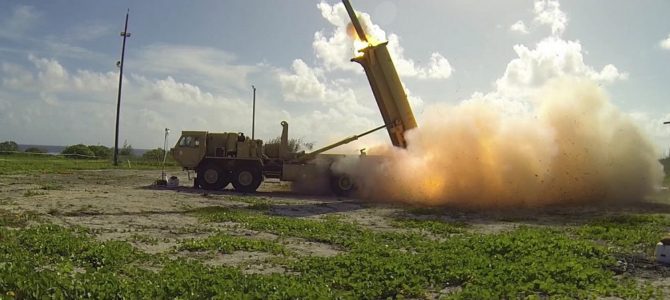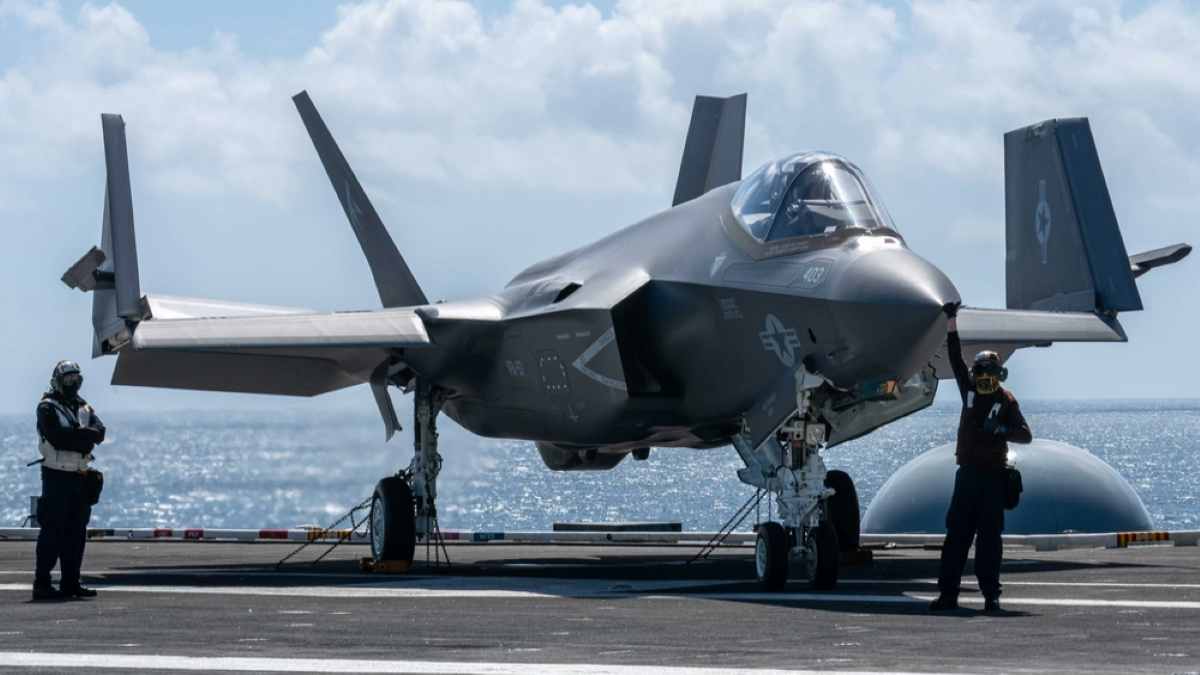
Thursday at the Pentagon, President Trump released his administration’s long-awaited Missile Defense Review (MDR). In his announcement, Trump promised “nothing less for our nation than the most effective, cutting-edge missile defense systems.” Indeed, the steps called for in this review will go a long way to toward employing new technologies to address next-generation threats and strengthening U.S. and allied security.
The missile threats to the United States and its allies have significantly increased in recent years. North Korea may now be able to reach the continental United States with a nuclear-tipped ballistic missile. Despite the curbs on Iran’s nuclear program, Tehran’s missile program continues to advance, making it the most sophisticated in the Middle East.
Importantly, America’s great power competitors, Russia and China, may have an edge over the United States in developing next-generation hypersonic missiles—missiles that travel at more than five times the speed of sound and are maneuverable, allowing them to defeat legacy missile defense systems.
Against this worsening security backdrop, missile defenses contribute to U.S. and allied security in three important ways. First, they can be used for defense in the event of conflict. We have seen U.S. Patriot missile defenses in action in the conflict in Yemen as Saudi Arabia has shot down dozens of Iranian-supplied Houthi missiles headed for Riyadh.
Second, missile defenses contribute to deterrence, dissuading an adversary from launching an attack in the first place. Russian strategy, for example, calls for limited nuclear strikes early in a conflict, with the goal of frightening Washington into backing down. But what is the purpose of launching one or two missiles if they are likely to be blasted out of the sky? Strengthened U.S. defense will force anti-American dictators to rethink their approach and take cheap shots off the table.
Third, U.S. missile defenses assure allies. U.S. strategic forces not only protect the United States, but the entire free world. Washington provides security guarantees to more than 30 formal treaty allies in Europe and Asia.
The deployment of U.S. missile defenses on their territories, like the deployment of THAAD missile defenses to South Korea last year, provide a visible representation of America’s security commitment. Among other benefits, this prevents allies from taking their security into their own hands and doing things that would undermine America’s interests, like building independent nuclear arsenals.
To these ends, the new MDR promises to beef up the number of radars and interceptors for existing U.S. missile defense systems. Most importantly, however, it also promises to pursue next-generation technologies. You cannot hit what you cannot see, and a new space-based sensor layer will allow the United States to track new enemy cruise and hypersonic missiles (President Obama published a “Ballistic” Missile Defense Review, but this document drops the first word in recognition of the broader array of missile threats now facing the United States).
Existing missile defenses use ground-based missiles to intercept an incoming enemy missile. It is like hitting a bullet with a bullet. But Trump’s new missile defense review calls for exploring directed energy interceptors. The idea would be for drones armed with lasers to hover in international airspace. If Pyongyang, for example, launches a missile in the future, drones will zap it with a laser in its most vulnerable boost phase.
In the past, the United States was clear that missile defenses were designed only for threats from rogue states, like Iran and North Korea. This review rightly expands this formulation. It acknowledges that there is no effective defense from a large-scale Russian or Chinese nuclear attack. But it also declares for the first time that we will not hesitate to shoot down Russian or Chinese missiles if they attempt to attack us or our allies in a regional conflict in Europe or Asia.
Critics will return to well-worn talking points, arguing that missile defenses do not work, are too expensive, and threaten to “destabilize” relations with Russia and China. They must not have been paying attention in recent years.
The U.S. test record across all missile defense systems since 2001 is 86 successful intercepts in 105 attempts. New technologies such as lasers promise to drastically reduce the cost per shot of future defenses. Finally, the greatest threat to international security is not U.S. defenses, but Russian and Chinese efforts to tear down the U.S.-led international order. Putting Moscow and Beijing on notice will bolster, not undermine, global stability.
If anything, the MDR may not have gone far enough. A new missile defense site on the East Coast and interceptors in space could have further bolstered U.S. defenses. Still, there is no doubt that with these enhancements, Trump is correct when he says, “We have the best [missile defenses] anywhere in the world. It is not even close.”









